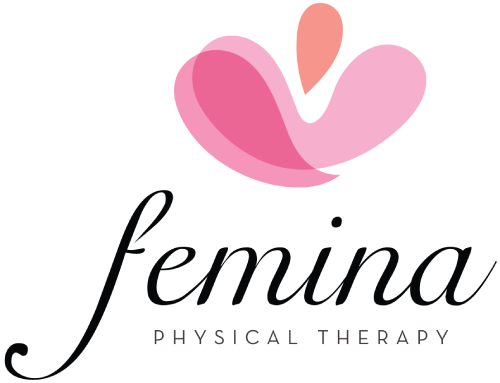Treatments for Female Sexual Dysfunctions
We treat a variety of pelvic pain issues, including female sexual dysfunctions such as vaginismus, vulvodynia, vestibulitis, and more.
Pelvic floor muscles are very important in the physiology of the female sexual response. Physical therapists play an important role in the multidisciplinary team when dealing with sexual dysfunctions. Arousal and orgasmic disorders and sexual pain are areas that pelvic floor physical therapy specialists can assist patients in restoring sexual health and pleasure.
- Pelvic Floor Dysfunction: This is a blanket term for a variety of problems that can occur with your pelvic floor. These problems range from sexual dysfunction, bowel and/or bladder problems, including incontinence or prolapse, endometriosis, and more. For more information check out voicesforpfd.org.
- Vaginismus: Involuntary muscle spasms involving the superficial and deep pelvic floor muscles that typically cause painful entry, limiting or preventing intercourse, tampon insertion or pelvic exams. Women with vaginismus do not always experience “pain” and often report the feeling of their partner or a tampon “hitting a wall”. Pain is also a common presentation when partial or complete penetration occurs. It may also present as minor discomfort with tampons, pelvic exams or intercoruse. Read more about vaginismus here.
- Vulvodynia means “vulvar pain” or pain of the external female genital region. Symptoms include burning, stinging, and irritation of the tissues in this region. Light touch or pressure can cause severe pain with sitting, walking, riding a bicycle, and sexual intercourse.
(http://www.vulvodynia.com) - Vestibulitis/Vestibulodynia is a form of vulvodynia with tenderness specific to the vulvar vestibule. This occurs with pressure to the site causies pain at the vaginal opening with touch or attempted penetration (provoked vestibulodynia). When pain occurs in the absence of touch at the vulvar vestibule, this is defined as unprovoked vestibulodynia. Tissues can be red or swollen at times (vulvar vestibulitis).
- Endometriosis occurs when endometrial-like tissue grows outside of the uterus, this is defined as endometriosis. It creates an inflammatory cycle and soon thereafter, scar tissue before begins to form. For many women, they’ll note a history of painful periods since they were a teenager, but when we ask their history more closely, they often will say they had “stomach issues” or other gastrointestinal diagnosis from a much younger age. This chronic cycle of inflammation can also lead to muscle guarding, pelvic pain, postural changes, decreased activity and in severe cases, social withdrawal. 1 in 10 women have endometriosis, and 70% of girls with painful menstrual cramps also have endometriosis. At Femina Physical Therapy we offer one-on-one physical therapy that addresses the complete picture of pelvic floor dysfunction, orthopedic issues and visceral restrictions as one of the main tools to help minimize the effects of endometriosis on your body. Read some of our many blogs on endo
- Painful Bladder Syndrome / Interstitial Cystitis: This pain or discomfort is perceived to be related to the bladder upon filling or often immediately after emptying. Symptoms include urinary urgency with pressure, burning and aching pain along with increased frequency, > 8 times per day and > 3 months duration. Associated symmptoms may also include low back pain, sexual dysfunction (pain during sex, pain after sex – termed post-coitus pain). Painful bladder syndrome was formerly known as Interstitial Cystitis – a chronic inflammation within the wall or lining of the bladder. However recent research supports that this is more of a condition of musculoskeletal dysfunction in the pelvic floor muscles, and rarely associated with any true bladder pathology, such as a Hunner’s Lesion (which only occurs in less than 8% of cases). As there is no infection present, the frequent rounds of antibiotics that patients are often put on do little to modify a patient’s symptoms.
- Pudendal Neuralgia has been described as throbbing or severe stabbing pain along the pathway of the pudendal nerve that runs through the gluteal, pudendal canal and perineal region. This pain typically increases during sitting and is reduced or relieved by sitting on a toilet seat. There is no sensory loss on clinical examination and an anesthetic pudendal nerve block is positive. Patients are not woken at night by pain, but do have pain during waking hours. Other clinical criteria can provide additional arguments in favor of the diagnosis of pudendal neuralgia, such as painful bowel movements or a feeling of fullness in the vaginal canal or rectum.This has also been termed Cyclists’ Syndrome when it occurs in long-distance cyclists.
- Coccydynia or painful coccyx can occur because of increased pelvic floor muscle tension or coccyx instability. Acute pain can be evident during sit to stand, intercourse, defecation and during menstruation and during and after sitting.
(http://www.coccyx.org) - Levator Ani Syndrome involves chronic or recurrent rectal pain and aching usually > 3 months in duration. Pain also occurs in the sacrum, coccyx, buttocks, and and thighs. Symptoms also increase with sitting.
- Vestibular or Perineal Itching if found to be absent of infection, should be looked at for musculoskeletal contributions. Tight muscles can pull on fascia (a type of connnective tissue), which in turn can pull on the skin and create constant or frequent itching, often mimicking the symptoms of a yeast infection.
Subscribe
Login
0 Comments
Oldest
